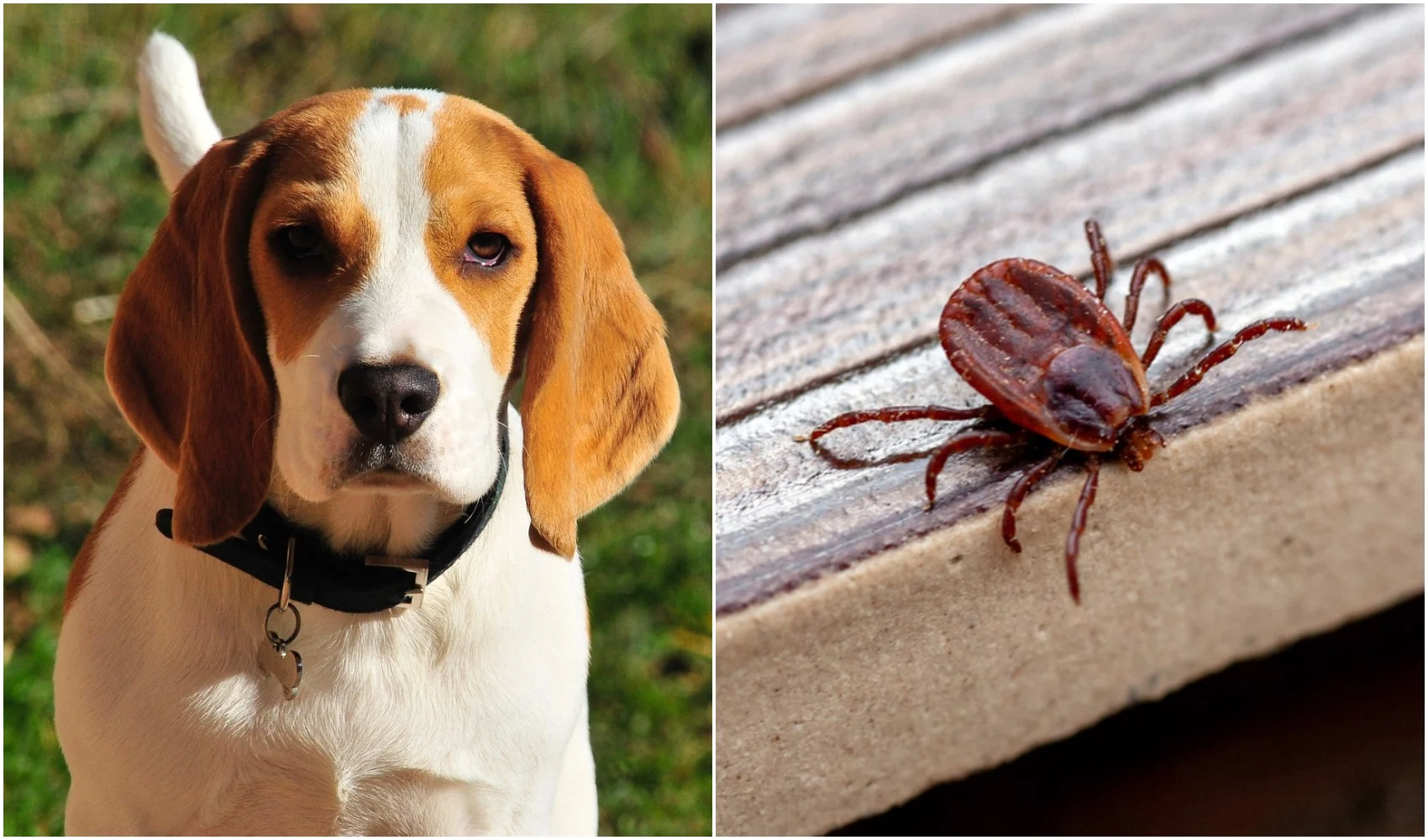The Brown Dog tick got his name due to it’s reddish brown color and most common host — a dog. While they are fairly common on dogs, humans are pretty safe. These ticks only attack people if they have no animal host. If you notice a brown tick on your dog, remove it as soon as possible. Unfortunately, often they intestate your home and a simple tweezer won’t solve this problem. In this article we will go over everything you have to know about the brown dog tick.
What are the characteristics of a brown dog tick?
Adult brown dog ticks are around 1/8″ long. But can grow to be about 1/2″ long when they feed on your dog’s blood. Male and female dog ticks have flat, reddish brown oval bodies that turn gray-blue or olive when engorged. Male dog ticks have little pits strewn throughout their backs. They have a scutum (shield) that covers their entire back. But females only have a scutum that covers the front section of their back. The eyes of both male and female dog ticks are on the scutum’s border, with the mouthparts visible from above.
How to remove a brown dog tick
To remove a brown dog tick, grip it as close to the skin’s surface as possible with fine-tipped tweezers. Pull steadily and evenly upward. If you twist or jerk the tick, the mouth pieces will break off and remain in the skin. Clean the bitten location carefully with soap and water once the tick has been removed. Do not touch the tick; instead, soak it in rubbing alcohol to identify it later. To get rid of it, flush it down the toilet or wrap it in a tissue before throwing it away. If you experience a reaction to the dog tick bite area, contact your doctor right away. If your dog has the reaction, contact a vet.
Treatment & Prevention
Brown dog ticks are best prevented by being aware of your dog’s surroundings and using tick prevention treatments. Keep your dog’s bedding and toys clean and tidy and wash them regularly. Tick treatment for dogs is also a vital preventative measure. Flea and tick repellant should be used as needed on your pets.
In case of an infestation, you have to clean the area carefully to make sure that most ticks are removed. Bedding and resting areas for pets should be carefully cleaned too. And make sure to wash your dog with a medicated shampoo too.
Habits of the brown dog tick
Adult brown dog ticks are usually found on the ears and between the toes of dogs, while younger or immature brown dog ticks adhere to the dog’s back. It is critical to understand how to properly remove dog ticks. Brown dog ticks can be found both outside and inside homes when they are not feeding on a host, however they prefer the warm, dry environment inside. Brown dog ticks are unique among ticks in that they can complete their whole life cycle indoors, allowing them to thrive in colder temperatures. They’re known to scale up shrubs, grass, and other vegetation in the wild, then attach themselves to passing hosts like dogs, deer, rabbits, and even humans.
Brown dog ticks are well-known for infesting homes after being introduced inside by pets like dogs. Female ticks will drop off their hosts and lay eggs in any crack or crevice they can find once inside, potentially resulting in an explosion of hundreds of juvenile ticks within weeks. Because they like to migrate upward to higher ground, eggs are frequently deposited in gaps near wall hangings, ceilings, or roofs, resulting in host contacts. Cracks along baseboards, window frames, and door frames can also be found. These dark brown eggs are typically placed in clusters of 1,000 to 3,000. The larval ticks feed on pets such as dogs and cats once they hatch, but they can also be found on humans.
Tick Diseases
Brown dog ticks like dogs, but if dogs aren’t accessible, they’ll feed on other mammals (including domestic animals and humans). Brown dog ticks rarely feed on humans, but they can transmit the rickettsial bacteria Rickettsia rickettsii and Rickettsia conorii, which cause Rocky Mountain spotted fever (RMSF) and Boutonneuse fever, respectively. They can also transmit tick-borne diseases to dogs, including as canine ehrlichiosis and canine Babesia, which induce fever, bleeding disorders, and systemic shock, among other symptoms.
Some additional content about ticks:
- How To Remove A Tick From A Dog
- What Does A Tick Look Like On A Dog?
- How To Find And Remove Ticks From Your Golden Retriever
- Ticks On Golden Retrievers: Identification, Removal & Prevention
- American Dog Tick: Bites And Diseases

